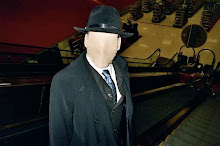In chapter 19, it talks about how ritual can be used to define a culture or an organization. They talk about the Balinese cockfights and how it was more than a game.
In other cultures ritual is very important to continue an existing way of life. Everything from Department stores, to fraternities, clubs, sports teams, and ethnic tribes are all examples of organizations that use ritual to define what their particular culture or organization is about. It is a way of reminding themselves where they come from.
In a traditional Samoan tribe, everyone has a job to do and they usually work in a team or assembly line structure. Preparing a day's meal is cool. There are the fisherman and the coconut gatherers, the cooks, and the basket weavers, to name a few jobs, who all work together to prepare the meal for the day. Everything is done so efficiently and deliciously that its amazing what they can cook just by using rocks and a hole in the ground with some banana leaves.
In the end the meal is set and the chief is the first to eat. No one else can eat until the chief is done. It is a custom of loyalty and respect.
Ritual is very important to keep an ideal going. History is made on rituals and without them, what kind of history would any culture had without them.
